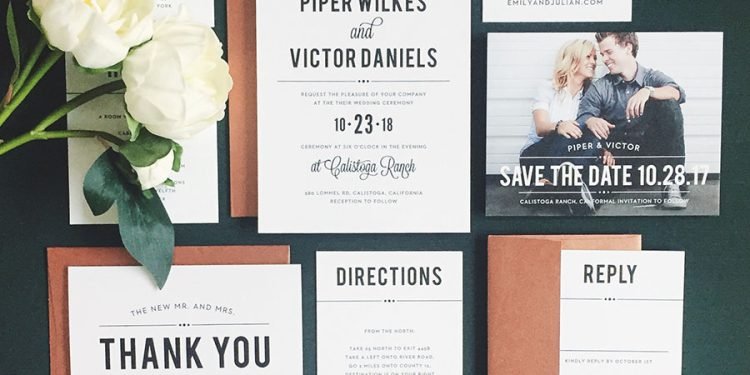When it comes to formal wedding invitation wording etiquette, there are many things you should keep in mind. You should not include the bride and groom’s names on the back of the invitation. You also should include the host line, which is a line that tells the guests who are hosting the event.
List the First, Middle, and Last Names of the Bride
When writing formal wedding invitation wording, it is essential to use the full names of the bride and groom. You can include first names only if you want a less formal feel. You should also spell out the date of your marriage. Traditionally, your wedding date is written as Date, Year, and Time. However, you may write it in a different order depending on the event you are having. To add to this, if you want to make your wedding invitation more modern, you can definitely include adding your unique wedding hashtag. In addition, you should include a place of worship and a reception location. If the ceremony is non-religious, you can list the city and state. A private home should also be listed.
Parents are usually listed on the bride and groom’s wedding invitations. These names are essential for verification. The bride and groom’s parents are often co-hosts. They might be listed in the host line or on separate lines. This depends on the couple’s relationship. The last name on the following line should list guests. Depending on the type of wedding, the couples’ names can be listed together or in alphabetical order.
Spell Out Who is Hosting the Wedding
If your wedding is formal, you may want to list the names of the ceremony’s hosts. Traditionally, the bride’s parents have hosted the ceremony. But you can also choose to have the bride and groom host the event. You should include the city, state, and ceremony venue on your wedding invitation. If you are hosting a ceremony at an unfamiliar location, you will want to include the zip code. However, you will probably not need the address if all your guests are local.
In addition to the hosts, your wedding invitation should list the names of the wedding payors. These are usually people who are financially sponsoring the event. They can be either family members or financial sponsors. Typically, the bride and groom are the only two people in this line. Your wedding invitation should also contain the date and time of the ceremony. You can use a formula like “June 27, 2019” or formatting such as “June 27, 2019”. It is not mandatory to include the numbers.
Include the Host Line
When you are writing your formal wedding invitation wording, one of the most important parts is the host line. This is the first line of your invitation and shows the guests who are arranging the event. The host line should be written most appropriately for your occasion. It is a great way to give your guests an idea of who is hosting the event and paying.
There are many different ways to write the host line, depending on the style of the event. For example, you can include the names of the bride and groom. Alternatively, you can list the names of the bride and groom’s parents. In addition to the host line, you should also write the date of the event. A date can be spelt out and in a fancy typeface. You can even use a hyphen if the number is over twenty.

Don’t Print Information on the Back
You can choose from various creative ways to word your wedding save the date templates. One option is to include adjectives that describe the wedding. Example: “A celebration of love and rejoicing,” or “Dance of love and fun.” If you have children or a spouse, you may want to omit the last name of all guests. This is particularly true if your last and partner’s last names differ. It is generally a good idea to list the couple’s parents before the children. In addition, you may wish to include a line in memory of a deceased family member.
Conclusion
When you are creating your wedding invitation wording, you need to take into account the tone of your ceremony. For example, a less formal ceremony will require a different type of invitation than a more formal one. Formal wedding invitation wording includes names, cities, states, and reception locations. It also includes a request to attend. However, you do not need to print information on the back of your invitation.












